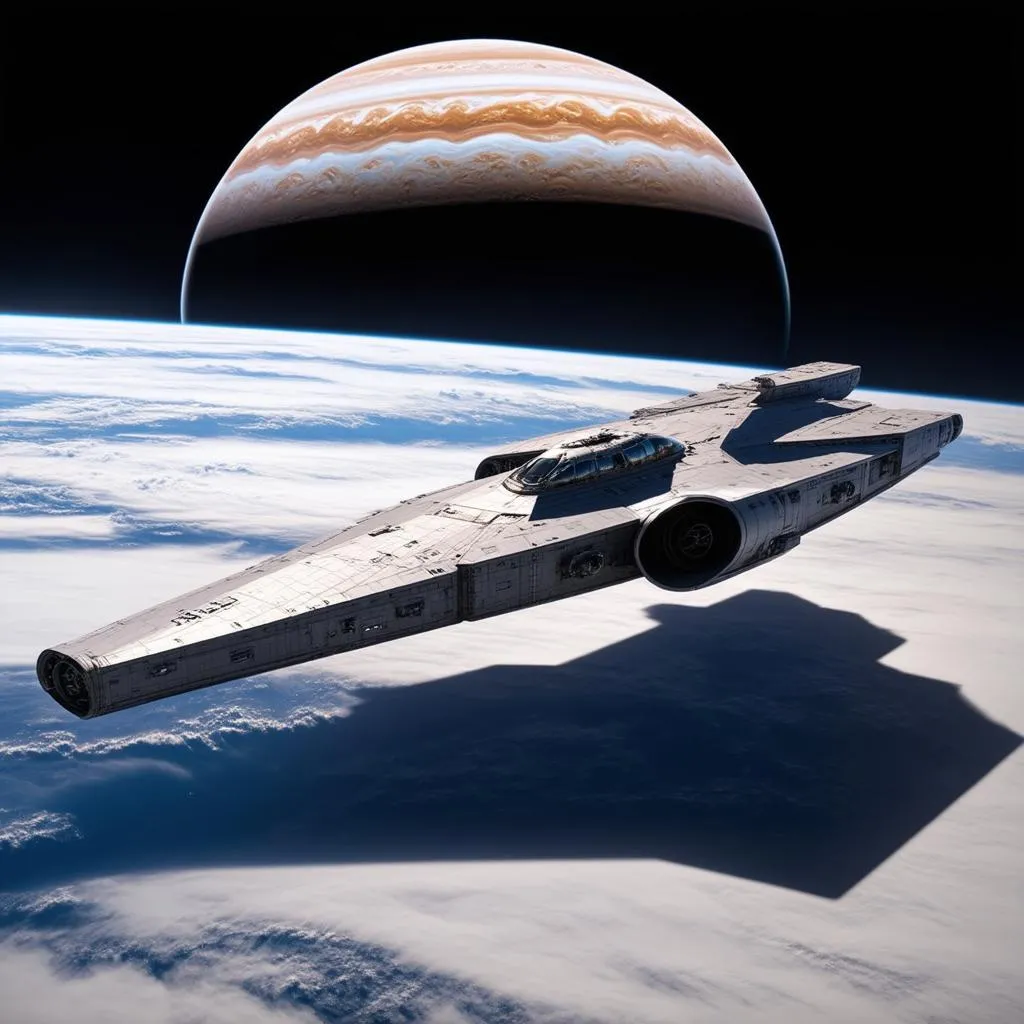Have you ever gazed up at the night sky and wondered about the colossal gas giant, Jupiter? Its swirling clouds and enigmatic Great Red Spot have captivated astronomers for centuries. But have you ever considered how long it would actually take to travel to this behemoth of our solar system? Buckle up, space cadets, as we embark on a journey to uncover the answer and explore the fascinating factors that influence interstellar travel time.
Decoding the Journey to Jupiter
Unlike a simple road trip, the journey to Jupiter doesn’t have a fixed duration. It’s like planning a vacation – it depends on several factors, just like choosing between a scenic route or a faster highway. In space exploration, these “routes” are determined by celestial mechanics and the capabilities of our spacecraft.
Distance: A Moving Target
The first thing to remember is that the distance between Earth and Jupiter is constantly changing. Imagine two cars on a racetrack – their distance apart varies depending on where they are in their respective laps. Similarly, Earth and Jupiter orbit the sun at different speeds and distances. At their closest point, Jupiter is about 365 million miles away from Earth. At their farthest, they can be over 600 million miles apart.
Speed: It’s Not Just About Going Fast
The speed of a spacecraft is paramount, of course, but it’s not as simple as picking the fastest one. We have to consider the spacecraft’s trajectory, fuel efficiency, and the gravitational forces it needs to overcome.
For instance, NASA’s Galileo spacecraft, launched in 1989, took a rather roundabout route, leveraging the gravitational pull of Venus and Earth for acceleration. This “gravity assist” maneuver, while extending the journey time to six years, was crucial for conserving fuel.
Mission Objectives: Science Takes Time
Often, it’s not just about getting there quickly, but also about what we aim to achieve. The Juno spacecraft, which arrived at Jupiter in 2016 after a five-year journey, wasn’t just built for a flyby. Its mission was to orbit Jupiter, studying its atmosphere, magnetic field, and internal structure. These complex scientific objectives necessitate specific trajectories and orbital maneuvers, influencing the total travel time.
Planning Your Hypothetical Jupiter Trip
Let’s say you were planning a trip to Jupiter. How long would you need to pack for? Here’s a simplified breakdown based on past missions:
- Fastest Trip: A direct flight with our current technology would take around 600 days, similar to the New Horizons spacecraft’s journey to Pluto.
- Scenic Route: A mission utilizing gravity assists like Galileo would take approximately six years.
- Orbital Insertion: If you plan to orbit Jupiter like Juno, be prepared for a journey of at least five years.
Unveiling the Mysteries: Why Jupiter Matters
You might be wondering, why go through all this trouble for a giant ball of gas? Well, Jupiter holds clues to the formation of our solar system. Its immense gravitational pull also acts as a shield, protecting Earth from potential asteroid impacts. Studying Jupiter provides invaluable insights into planetary science and the universe beyond.
Exploring Further: A Universe of Knowledge
Want to delve deeper into the fascinating world of space travel? Check out these articles:
- How Far Has Voyager 1 Traveled?
- How Fast Can a Spaceship Travel?
- How Long Would It Take to Travel to the Moon?
 Jupiter Spacecraft
Jupiter Spacecraft
 Earth and Jupiter Trajectory
Earth and Jupiter Trajectory
Remember, the universe is vast, and our journey to understand it is just beginning. Keep exploring, keep asking questions, and who knows, maybe one day, a trip to Jupiter won’t seem so far-fetched after all.